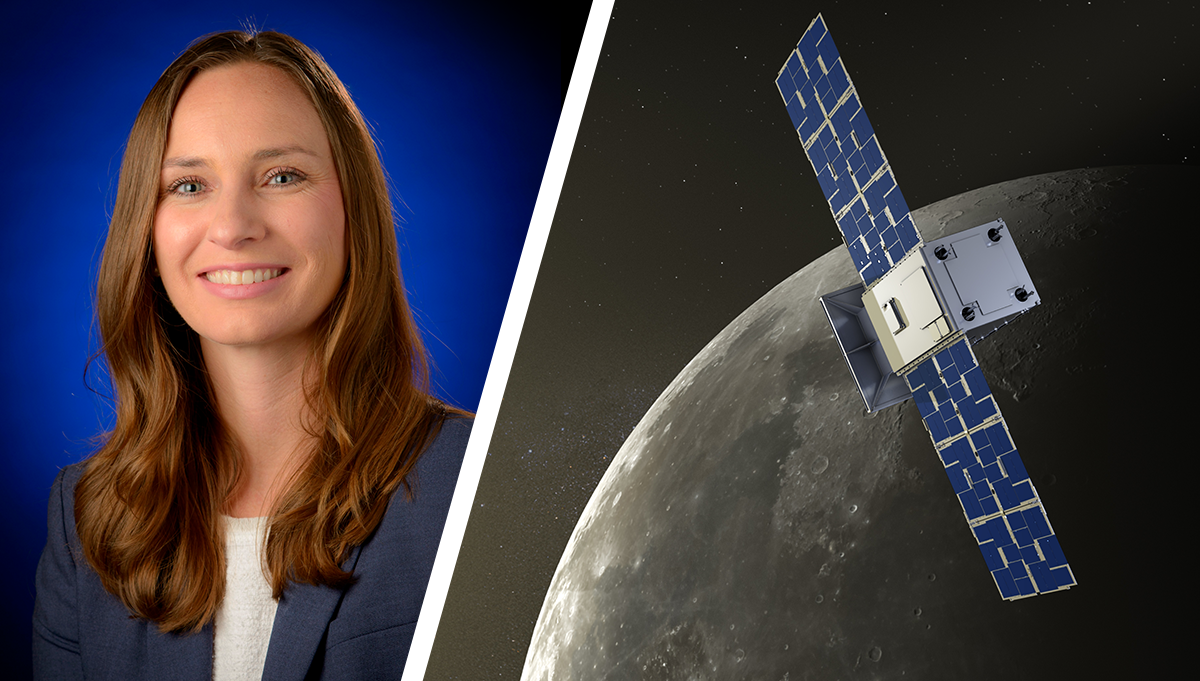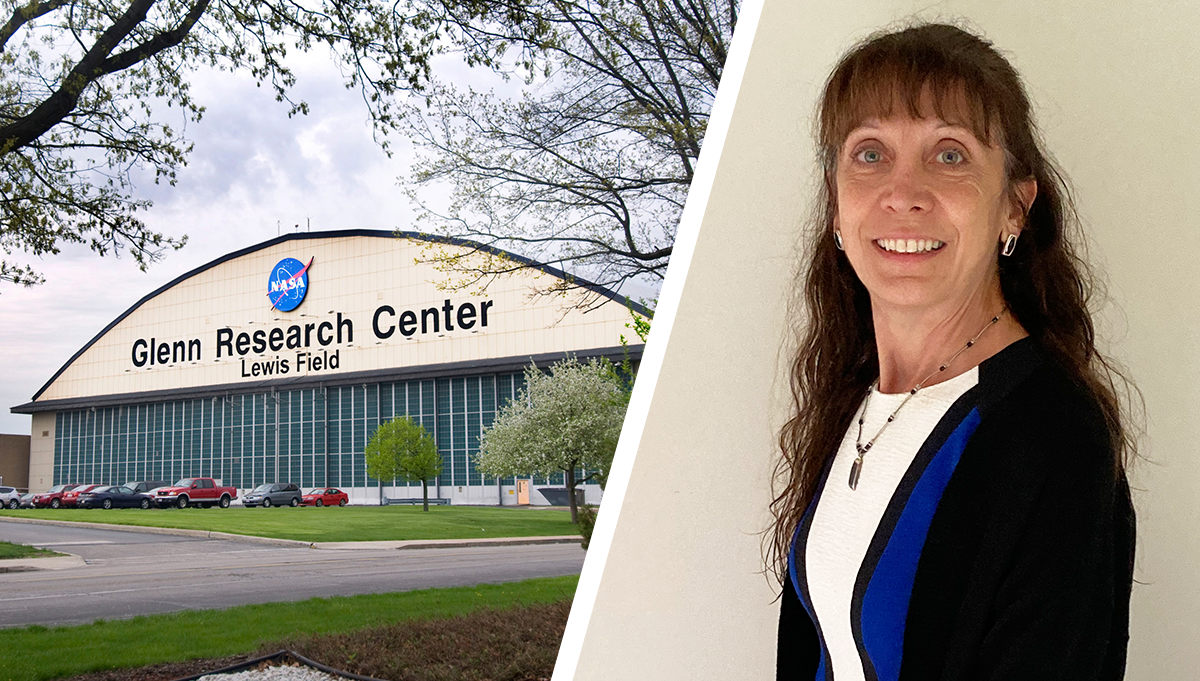
From artificial intelligence and people analytics to machine learning and an innovation dream zone, digital transformation is redefining NASA knowledge sharing methods and tools.
NASA digital technology experts met with the agency’s knowledge community in May to highlight currently and nearly available digital technologies, tools and themes that knowledge practitioners can use as they advise and support missions, programs and projects.
The virtual meeting, hosted by APPEL Knowledge Services and the Office of the Chief Knowledge Officer, featured presentations, technology demonstrations and dialogue about potential opportunities for the digital information and knowledge sharing communities to partner more closely in the future.
“Our goal for the meeting was to encourage conversation and learning among groups who have expertise in different areas and might not have the opportunity to engage with each other as often as they would like,” said Acting NASA Chief Knowledge Officer and APPEL Knowledge Services Director Tiffany Smith. “Connections made during this gathering can enhance those relationships and help people in the knowledge and digital arenas to collaborate in support of NASA mission success.”
Approximately 55 people participated in the event, which covered a wide range of knowledge and digital information topics.
Innovation Portal
Transforming diverse ideas into value is the cornerstone of NASA’s Innovation Initiative.
“It should be part of our culture that we all have ideas that add value to the agency,” said Ken Wright, NASA Office of the Chief Technologist Innovation Lead and Digital Transformation Culture and Workforce Co-Lead.
Wright outlined the progress of the agency’s Innovation Initiative and listed the top-level aspects of the Innovation Framework.
- Clarify the need
- Assess ecosystem
- Define future state
- Develop, communicate and coordinate experiments
- Share lessons learned
Wright emphasized the importance of defining a future state and expanding vision to sustain innovation, and then developing experiments and quickly sharing lessons learned. He referenced a TED Talk where the presenter suggested imagining Dr. Martin Luther King saying, “I have a plan” instead of “I have a dream.” Wright said a “Dream Zone” is being developed on NASA’s innovation portal to provide a collaborative environment for diverse groups to transform dreams into activities that have maximum value for the agency. He provided a demonstration of the innovation portal, which is an information and engagement platform that connects NASA’s community to products, people, websites and activities from diverse sources across the agency.
Artificial Intelligence and Machine Learning for Knowledge Capture
Artificial Intelligence and Machine Learning (AIML) capabilities are becoming far more powerful, available and affordable, and Ed McLarney, Lead for Transformation Integration and AIML in the NASA Office of the Chief Information Officer Transformation and Data Division, says he thinks AIML is at a tipping point where more people are interested in it. McLarney said there is a lot going on with AIML capabilities that can help with knowledge sharing and understanding and sifting through knowledge.
He shared use cases in development that indicate a wide variety of possibilities for AI to help with knowledge sharing, including:
- Testing the use of natural language processing (NLP) to help with the human-intensive endeavor of decadal surveys
- Experimenting with NLP to help recommend new skill sets for strategic workforce planning
- Using speech recognition and NLP to tag and index content of knowledge capture from retirees
- Considering NLP to assess sets of requirements for redundancies or internal conflicts
- Testing language translation for technical documents
- Building on seven years of NLP use of IBM Watson to examine concept clustering, sentiment analysis and advanced multi-faceted search
“For our AIML thrust, we want to help align, connect, advocate for and capitalize on efforts that are already going on and multiply it five, 10, 20 times as many use cases and people making use of these capabilities,” said McLarney. “We want to be a catalyst for far more people to take advantage of it.”
Scientific and Technical Information Program

NASA’s STI Repository (NTRS).
Credit: NASA
The NASA Scientific and Technical Information (STI) Program manages a world-class collection of aerospace-related citations, full-text online documents, images and videos created or funded by NASA. The NASA STI Repository (NTRS) includes over one million bibliographic records and full-text documents while the NASA STI Registered Repository (NTRS-R) includes over 3.8 million records and full-text documents. STI Program Manager Karen Fallon provided an update on STI modernization and underscored the importance of collaboration to share knowledge and maximize budget. Fallon said many of the new platforms come with a huge amount of technical capability, and STI is training operators to become familiar with the new environments and leverage the platforms.
“What seems innovative to some is intuitive to others,” said Fallon. “What seems really brilliant and a big stretch in some cases is something that needs to be approached incrementally, and so we’ve tried to take different measures of that innovation interpretation into an operational environment.”
She provided an update on the Scientific, Technical and Research Information discoVEry System (STRIVES) as an example of the STI Program’s focus on modernizing the user experience and using new techniques to make information more discoverable. The submission portal was deployed within the past year and replaces multiple legacy systems.
Fallon also discussed the STI Partnership Initiative, which seeks to enhance and expose NASA-funded scientific and technical information by maximizing interconnectivity with other NASA programs, inter-agency organizations, U.S. industry and academia as well as enhance discoverability of NASA data and identify relevant resources.
Model Based Program Management
The Space Technology Mission Directorate’s Game Changing Development (GCD) Program uses multiple proven processes to manage risk and is working to automate and augment the processes with digital tools to support efficient, predictive and informed decision-making. Current development focus highlights include:
- Technology Readiness Assessment Insight Template (TRAIT) tool — technical progression approach justifications for technology characteristics, including challenges, gaps, levels, capabilities and environments
- Model Based Program Management (MBPM) solutions — technical, schedule, financial, reporting, risk and programmatic efficiencies
- Risk Digital Assistant – AIML augmented risk analysis
Amanda Cutright, GCD Program Chief Engineer, provided an overview of GCD’s MBPM efforts, and said the tools and processes are extensible beyond GCD.
“We’re working on hard problems because we are creating space technologies that do not exist yet,” said Cutright. “For current missions, engineers can use existing capabilities and technologies that are already out there and available. But if we are going to change what we look like in the future, we also have to, in parallel, invest in totally new methods for space hardware, software, manufacturing solutions or processes that are going to change the game.”
GCD focuses on high-risk, high-reward technologies and advances exploratory concepts into solutions for spaceflight that will enable new capabilities or radically alter current approaches. The program funds more than 100 space technology projects across many different capability areas, including robotics, autonomy, power, propulsion and in-space resource utilization.
Knowledge Graphs
Enterprise knowledge graphs help organizations create their specific web of knowledge representing their own domain, allowing them to seamlessly break down data silos to use information assets in an agile way. David Meza, Senior Data Scientist in the Office of the Chief Human Capital Officer, showcased NASA people analytics work geared toward identifying workforce skills and capabilities via a knowledge graph.
“Knowledge graphs help us connect the data across these various disparate data sources,” said Meza. “You’re able to find similarities and relationships across these different, disparate data sources and make these connections, put them into a graph database, and then eventually you’re able to have better search, better capabilities to find information across multiple sources a lot faster.”
He shared a recent win where knowledge graphs made it possible to show all occupations associated with Earth science and almost immediately fulfil a recruiting request that previously would have taken two to three days. Meza provided a knowledge graph demonstration and displayed a Knowledge Skills and Abilities Tree (KSAT) Knowledge Graph Model Workflow that enables data connections to identify skill gaps and career paths and helps with strategic planning and succession planning.
Enterprise Data Platform
NASA’s Enterprise Data Platform (EDP) is foundational as the agency works toward a data and knowledge hub. An EDP will elevate the agency’s ability to seamlessly find, harness and translate NASA’s abundance of data into actionable insights and greater scientific discovery. Jason Duley, NASA’s Information Management Program Executive, presented a conceptual data architecture that features integrated tools to provide NASA’s workforce with low-code approaches and a lot of capabilities to do data science and data storytelling. Duley said they plan to set up a data exchange this fiscal year.
“All these authoritative systems that NASA operates are heterogeneous. There are relational databases. There are graph databases. There are proprietary stores. And there’s a lot of different paradigms at play, so being able to mix and match those requires a fair amount of data engineering,” he said. “One of the primary goals is to bring together a community of data stewards to do access management at the enterprise level.”
Duley said the data and knowledge hub can accelerate pace of delivery by making data and talent readily discoverable across the agency, benefitting project managers, engineers, scientists and researchers.
NASA Engineering Network
The NASA Engineering Network (NEN) was established in NASA’s Office of the Chief Engineer in response to Columbia Accident Investigation Board recommendations to update the process used to share, manage and distribute knowledge and lessons learned across the agency. NEN went live in 2005. NEN connects NASA employees with information, people and tools through lessons learned, powerful search capabilities, and communities of practice. Daniel Hoffpauir, Lead Community Facilitator for NEN, presented an overview of NEN.
“We are a knowledge sharing platform, and we are connecting NASA employees to each other and information from our wealth of disciplines as well as tools that are available through these communities,” said Hoffpauir. “We make it easier to find expertise.”
NEN offers collaboration across the engineering community to mitigate technical risk and ensure mission success. Dedicated facilitators help to guide content structure and community engagement. NEN provides access to the NASA Lessons Learned repository as well as access to search multiple federated engineering repositories.
Digital Transformation Initiative
NASA has embarked on a multi-faceted Digital Transformation Initiative with thrusts including the AIML, data and model-based approaches discussed during the Knowledge and Digital Information Sharing event as well as additional transformation thrusts in culture and workforce, process transformation and collaboration. NASA’s digital transformation also includes two key fusion aspects: crafting integrated solutions to priority challenges and forging a NASA-wide transformation architecture to align, synchronize and link with additional change efforts.
Related Resources
Innovation Portal (NASA Internal)
Artificial Intelligence & Machine Learning (NASA Internal)
NASA Engineering Network (NASA Internal)
Digital Transformation Nexus (NASA Internal)
Small Steps, Giant Leaps Podcast Episode 45: Digital Transformation









